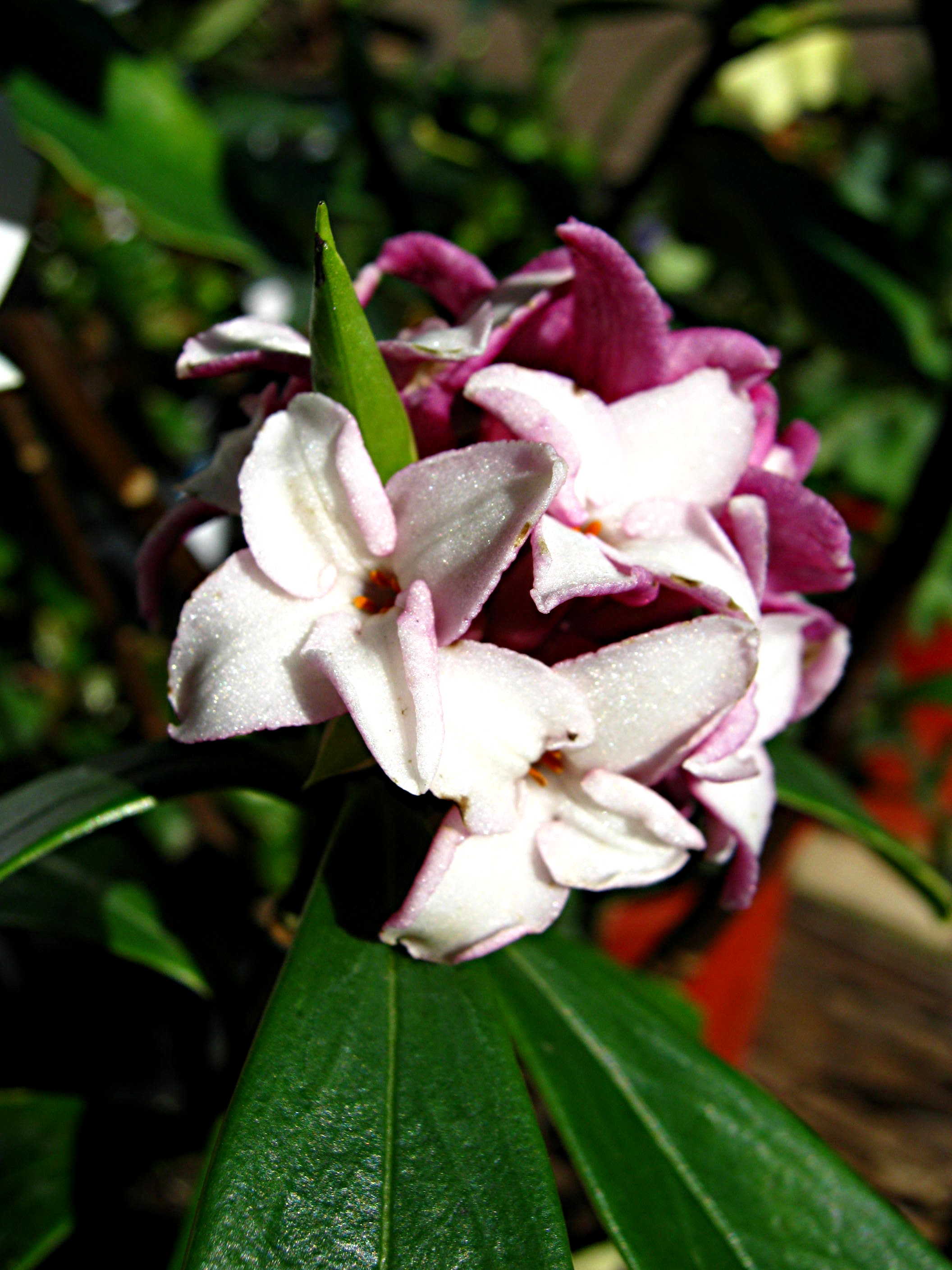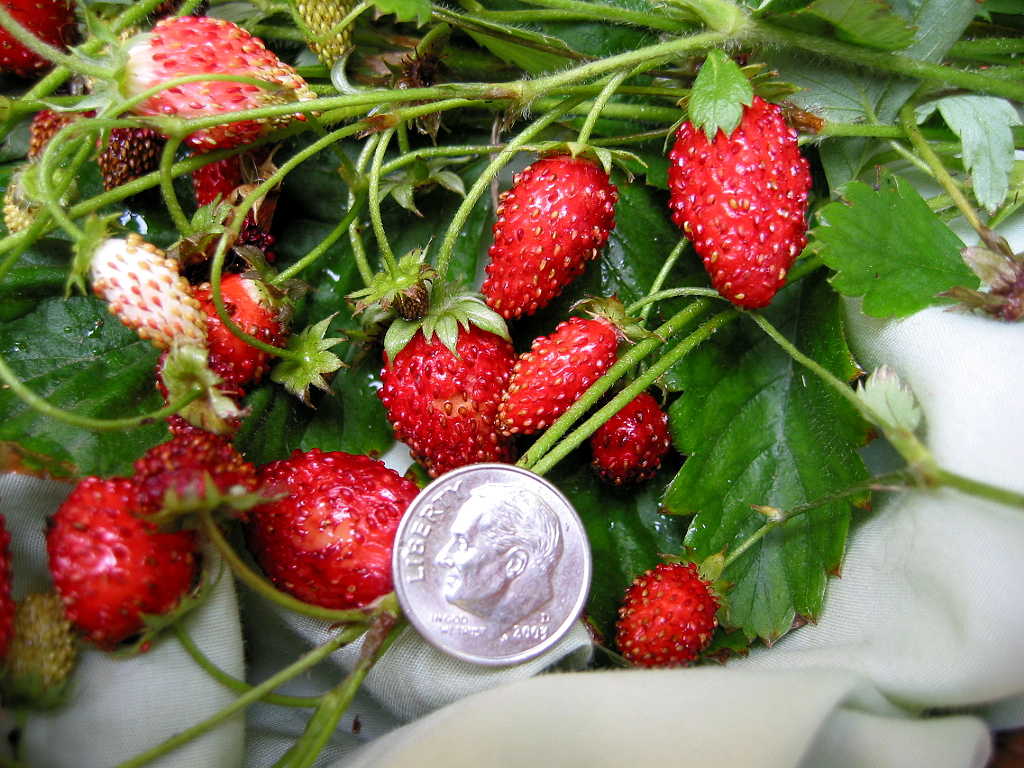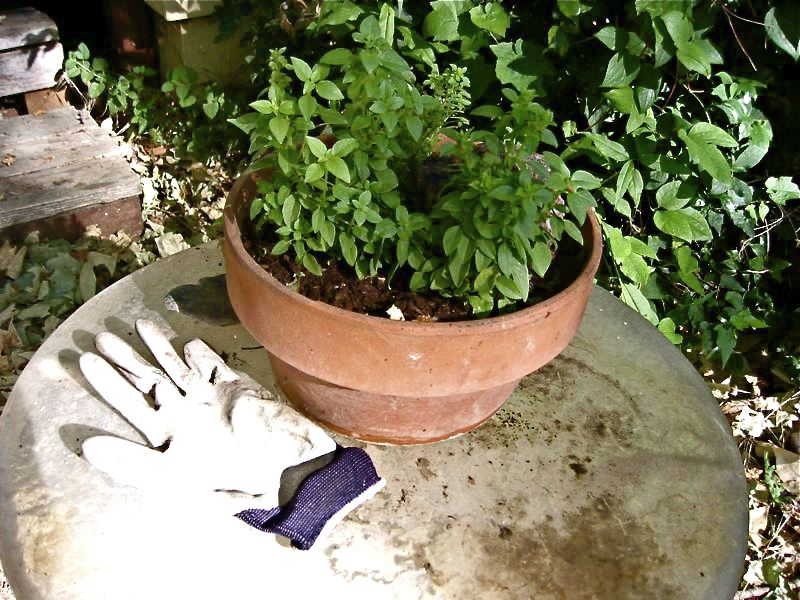A grab bag of topics!
Some February garden questions
Written for the Davis Enterprise February 23 2012
 Daphne odora has a stunning fragrance. The most common variety, shown here, is Marginata, named for the darker margin on the petals and the lighter margin on the leaves. Nice specimens in the UC Davis Arboretum are blooming now. Daphne has no special requirements except perfect drainage and care about overwatering. And even with that, sometimes it just up and dies. Yet the fragrance makes gardeners persist.
Daphne odora has a stunning fragrance. The most common variety, shown here, is Marginata, named for the darker margin on the petals and the lighter margin on the leaves. Nice specimens in the UC Davis Arboretum are blooming now. Daphne has no special requirements except perfect drainage and care about overwatering. And even with that, sometimes it just up and dies. Yet the fragrance makes gardeners persist.

Sweet Victorian box, Sarcococca ruscifolia, is an easy-to-grow shrub with winter fragrance. The flowers (closeup below) are small and not showy, but the sweet gardenia-like scent wafts through the garden. Sarococca can't tolerate direct sun and is happy in complete shade. The shrub, which has shiny dark green leaves, grows slowly to three to four feet tall and broad over several years.
 Alpine strawberry, also called wild strawberry, is a different species than our larger garden strawberry. Tiny fruit, packed with flavor, comes in light steady crops from spring through fall. Plant in partial shade and give plenty of water. This strawberry makes a clumping plant, without the runners of the better-known species.
Alpine strawberry, also called wild strawberry, is a different species than our larger garden strawberry. Tiny fruit, packed with flavor, comes in light steady crops from spring through fall. Plant in partial shade and give plenty of water. This strawberry makes a clumping plant, without the runners of the better-known species.
 The miniature basil varieties are suitable for gardeners limited for space. Spicy Globe, shown here, can be kept in a pot all summer. It has a somewhat stronger flavor than traditional sweet basil, so you can use smaller quantities in your favorite recipes.
The miniature basil varieties are suitable for gardeners limited for space. Spicy Globe, shown here, can be kept in a pot all summer. It has a somewhat stronger flavor than traditional sweet basil, so you can use smaller quantities in your favorite recipes.
 Phalaenopsis, also called moth orchids, are among the easier orchids to grow for home gardeners. They initiate flower buds under cooler conditions than most orchids, so their blooms tend to be in late winter and spring.
Phalaenopsis, also called moth orchids, are among the easier orchids to grow for home gardeners. They initiate flower buds under cooler conditions than most orchids, so their blooms tend to be in late winter and spring.
Why are you flinching when I ask about Daphne?
Daphne odora is blooming now, and the fragrance is unbelievable. Lemony and sweet, it volatilizes and drifts through the yard. There are some lovely specimens in the Storer Garden and the Shields Garden at the UC Davis Arboretum.
Daphne is notorious for dying abruptly when you water it too often, and the plant's definition of "too often" seems capricious and arbitrary. Expert gardeners kill them just as readily as do novices.
Sometimes customers won't believe me when I tell them this, so now we just read them this description from the Sunset Western Garden Book:
"So prized for its pervasive floral perfume that it continues to be widely planted despite its unpredictable behavior - it can die despite the most attentive care, or flourish with little attention until you invite all your gardening friends over to admire it, at which point it promptly succumbs without warning just to show you who's in charge" [Sunset Western Garden Book, 7th Edition, p. 310].
It's not that Daphne is hard to grow, it's that it is easy to kill. It doesn't need or benefit from special soil or fertilizer. Just provide it perfect drainage, water as infrequently as you can without stressing it, and hope for the best. If you want winter fragrance in the shade, consider Sweet Victorian box (Sarcococca ruscifolia) instead.
Is it ok to use recycled pressure-treated lumber for garden beds?
A controversial subject. Pressure-treated lumber from before 2003 used chromated copper arsenate, so it contained arsenic. While tests showed the arsenic didn't get into the plants, other tests showed it might get into the soil. Pressure-treated wood since 2003 contains just chromium and copper. You should still wash your hands and carefully dispose of the sawdust when you use them. But the toxicity risk is much lower.
Can we grow --
wild strawberries?
Yes! Also called alpine strawberries, these prefer partial shade and plenty of moisture. They aren't fussy. The plants don't send out runners the way their better-known commercial cousins do. Fruit is small, dryish, and packed with flavor.
currants? gooseberries?
I haven't heard of anyone doing well with true currants or gooseberries here. They don't like dry heat.
Speaking of odd fruit, what is a Florida Avocado? It looks like avocado heaven but I don't think it actually is.
There are two basic types of avocadoes: Guatemalan and Mexican. "Florida avocado" is a marketing term used, over the years, for certain Mexican-type avocadoes grown in Florida. California avocadoes are the Guatemalan type. Some of the Mexican types grown in Florida get very large, but they have lower oil content (15% or so), and more water, so they aren't as flavorful. The older Mexican types (Fuerte, Mexicola) are small fruit that have higher oil (18 - 21%) and a good, nutty flavor. The Guatemalan types such as Hass are the gold standard, and they are the basic California avocado: 21 - 24% oil, rich flavor, good texture.
Guatemalan types are more frost tender, so they are limited in growing range. Mexican type are hardier, so growers in northern Florida are always trying to grow them and figure out a way to market them. The big fruited varieties were a great marketing tool, but consumers were very disappointed by the flavor when compared to Hass. California growers got together and banned their import into the state on some vague grounds that it would lead to consumer dissatisfaction with the whole industry.
Can't we grow Mexican avocadoes here?
Yes, the recommended varieties for Northern California are Mexican types. The good Mexican types, not this big watery thing they grow in Florida. Stewart, Bacon, and Zutano are other Mexican varieties suitable here. Even these hardier types need protection from very cold nights. Find a south or east-facing wall and plan to protect the young trees in the winter.
Isn't it time to plant basil?
No, basil prefers warm soil. It isn't really suitable to plant it until the night temperatures are in the upper 40's.
Anything new on the cherry pest that gets worms in my fruit?
Nope. Try planting later-ripening varieties and hope the heat reduces the fruit fly population before the fruit ripens. Try harvesting the fruit when it first turns red, but before it begins to soften. Try the organic spray (spinosad). Let us know which of these works for you. We haven't had great feedback on any control methods; see our original article here.
I have tried to order plants online in the past from out of state nurseries but most won't ship to California. Any idea why this is so?
California has current quarantines and restrictions on specific plants for 26 different pest issues, affecting plants from any number of states. The specific information is available at the California Department of Food and Agriculture web site, but your local agricultural commissioner can also advise you (they know how to retrieve the information for you). Many mail-order and online vendors aren't willing to bareroot their plants, do the inspections, subject them to the hold at the other end, and get the proper paperwork needed to fulfill California's import restrictions.
I got an orchid for Valentine's Day! How do I grow it, and how do I get it to bloom again?
Orchids aren't the easiest houseplants for the novice gardener. First step is to figure out what kind you have. Check the label. There's a high likelihood it's a Phalaenopsis, because they've become very inexpensive and readily available, and are pretty easy to grow (for an orchid).
A few quick pointers:
· The tropical types will grow indoors in the brightest light you have other than direct sun.
· They need even moisture but don't want to be soggy (most problems result from root rot).
· They grow and bloom best if they are a little rootbound, and can tolerate being very rootbound. Overpotting them (putting them in a pot that has too much extra soil around the roots) increases the risk of overwatering.
· Most have a rest period after bloom.
· Orchids generally won't bloom again on the same growth in the same year. So you need them to keep putting on new growth, which is why orchid growers usually fertilize their plants on a regular schedule.
Phalaenopsis is unique in that it sets flower buds under cooler conditions; say, 60 degrees or so. Most others require more consistently warm conditions. So Phalaenopsis happens to set buds under the temperature range we mostly have in our homes at night in the wintertime. That's one reason it's a good choice for home orchid growers who don't have a greenhouse.
I'm not a fan of the moss that some growers are using. I think it stays too damp, and tends to rot. I suggest repotting orchids from that into straight orchid bark.
Cymbidiums, the traditional Easter orchid, are different: terrestrial rather than epiphytic, to use the official jargon. If you happened to get a cymbidium orchid, pot it into half-bark, half-soil, and keep it outside in the shade. Cymbidiums are (mostly) spring bloomers and tolerate a wider range of temperatures than other orchids, even accepting temperatures close to freezing.
More on orchids here.
Questions? Send them to redwoodbarn@gmail.com. Lois Richter and I answer questions on the Davis Garden Show (http://kdrt.org) from noon to 1 pm on Thursdays, and I'll consider questions of general interest for future columns.
© 2012 Don Shor, Redwood Barn Nursery, Inc., 1607 Fifth Street, Davis, Ca 95616
www.redwoodbarn.com
Feel free to copy and distribute this article with attribution to this author.
Click here for Don's other Davis Enterprise articles
